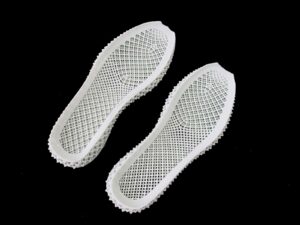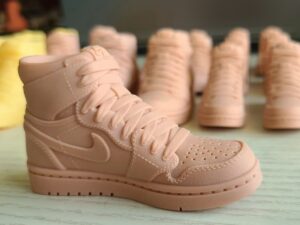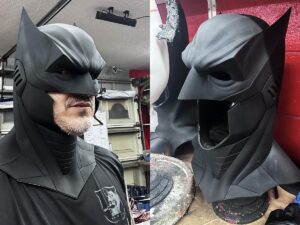- BinderJet 3D Printed SS316L Bypass Valve Prototype
- BinderJet 3D Printed and Polished SS316L Polyhedral Decoration Nut
Gallery
About Project
The world of wearable technology is constantly evolving, and 3D printing is at the forefront of this innovation. This 3D-printed SS316L smartwatch housing prototype is a testament to the capabilities of modern manufacturing techniques.
- Material Mastery: Crafted from high-quality SS316L stainless steel, this prototype boasts exceptional durability and corrosion resistance.
- Design Elegance: The square or rectangular shape with rounded corners offers a sleek and modern aesthetic, aligning with contemporary smartwatch trends.
- Functional Focus: The distinct round cutout on the side is designed to accommodate the digital crown, a key element for navigating smartwatch functions.
- Precision Engineering: BinderJet 3D printing ensures intricate details and precise tolerances, resulting in a high-quality finished product.
The Future of Wearable Tech
This 3D-printed smartwatch housing prototype represents a glimpse into the future of wearable technology. By leveraging advanced manufacturing techniques like BinderJet 3D printing, we can expect to see increasingly innovative and personalized wearable devices.
Elevate Your Designs with FacFox
FacFox offers a wide range of metal 3D printing services, including BinderJet 3D printing, to bring your design ideas to life. Whether you’re prototyping a new smartwatch housing or developing a custom wearable device, FacFox can help you achieve your goals.
Contact us today to learn more about our metal 3D printing capabilities and how we can help you push the boundaries of wearable technology.
Solution
- Step 1: 3D Model Creation. A detailed 3D model of the smartwatch housing was designed using CAD software.
- Step 2: 3D Model Slicing. The 3D model was sliced into thin layers, each representing a cross-section of the final part.
- Step 3: Powder Bed Preparation. A layer of fine stainless steel powder (SS316L) was spread evenly across the build platform.
- Step 4: Binder Jetting. A printhead jetted a liquid binder onto the powder bed, selectively bonding particles together to form the shape of the first layer.
- Step 5: Powder Layering. A new layer of powder was spread over the partially built part.
- Step 6: Binder Jetting. The printhead continued to jet binder onto the powder, layer by layer, until the entire part was formed.
- Step 7: Debinding. The part was removed from the build platform and placed in a debinding chamber. The liquid binder was removed from the part, leaving a porous structure.
- Step 8: Sintering. The part was heated to a high temperature in a furnace. The metal powder particles were fused together, creating a solid and dense metal part.









